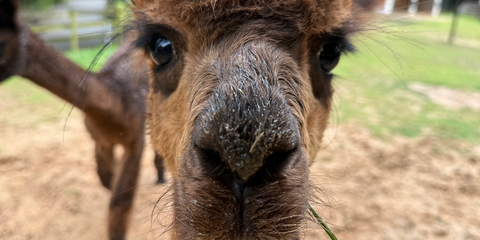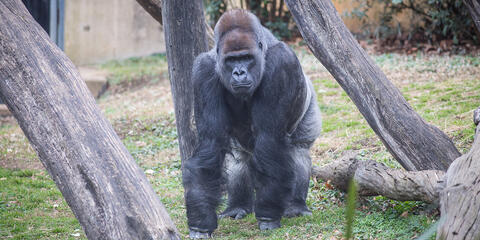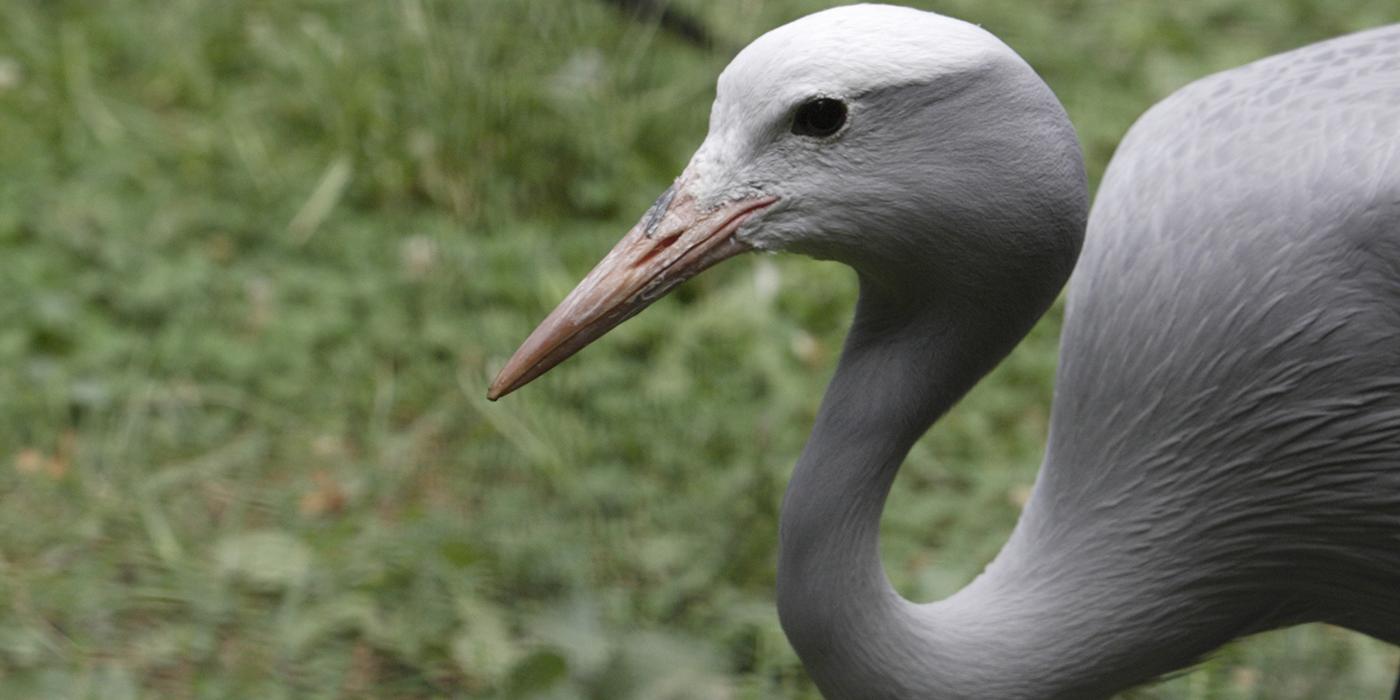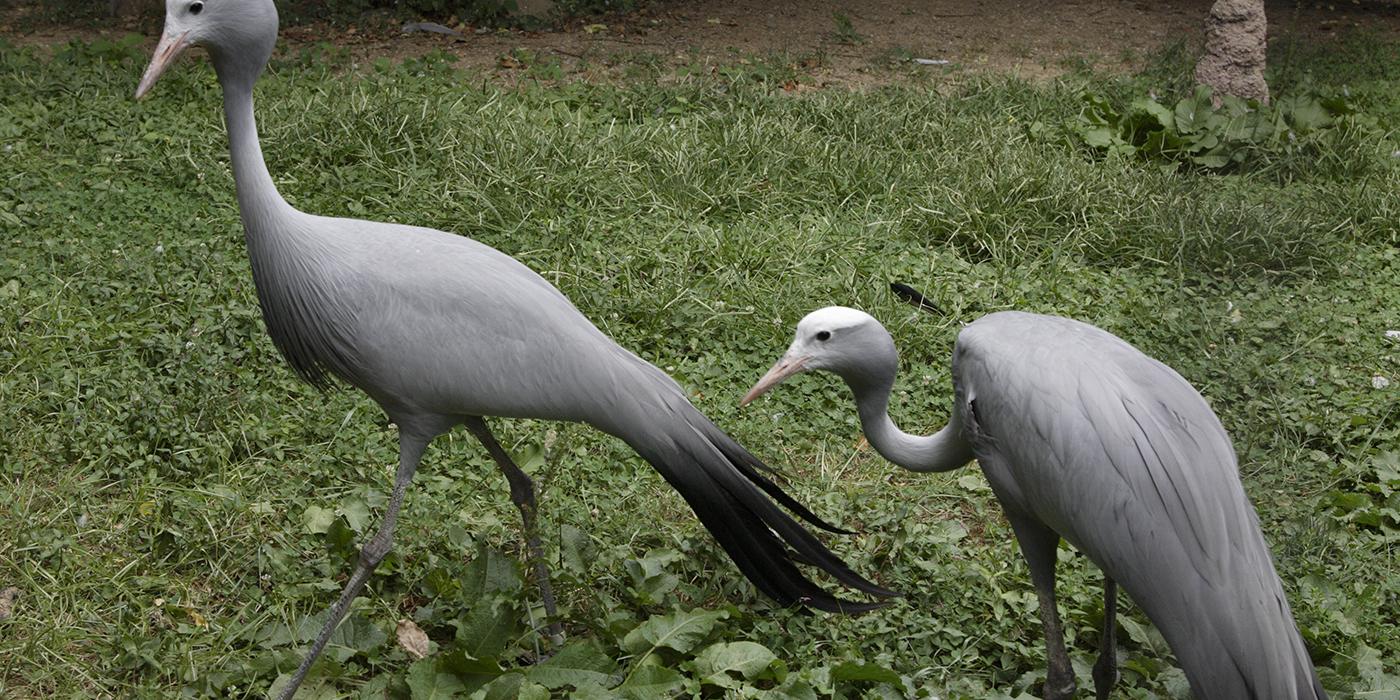Physical Description
Most crane species possess red patches of scaly skin on their heads that they use extensively in threat displays. Blue cranes, along with their close relatives the demoiselles, do not have these red patches, but their head feathers are erect when excited or aggressive.
The long dark feathers trailing to the ground behind these birds are actually wing feathers, not tail feathers. Crane tails are very short and usually not visible unless the crane raises its wings. The crane's legs and feet are black.
Size
Blue cranes can be up to 3.5 feet (1 meter) long. Females are smaller than males.
Native Habitat
This crane has the smallest range of any crane species: 99 percent of the world's 12,000 to 23,000 Blue cranes live in South Africa. They prefer to feed and nest in dry, grassy uplands. They generally nest in high elevation grasslands, where there are fewer disturbances. During the winter, they move down the mountains to lower altitudes.
Communication
Most crane pairs leap and pirouette when dancing. While blue cranes also leap and bow, most of their dance consists of the two birds running together with the female in the lead. The excited birds often interrupt their chase to stop and call.
Food/Eating Habits
In the wild, these birds eat seeds and insects.
Social Structure
Blue cranes usually live in pairs with one or two young. During migration, they gather in larger flocks.
Reproduction and Development
Most blue cranes prefer to nest in places where they will not be disturbed, but some nest in agricultural areas. They lay two eggs in the grass or on the bare ground. The eggs are brownish-yellow marked with blotches of darker brown and olive. Incubation lasts 30 to 33 days, and the chicks leave the nest after three to five months.
Conservation Efforts
The blue crane is the national bird of South Africa, and while this provides official protection, laws are difficult to enforce and often sometimes ignored. Farmers trying to protect crops sometimes poison blue cranes deliberately or accidentally, when the cranes eat poisoned bait intended for other species, or after routine dusting of crops.
Closely associated with grasslands, they are sometimes victims of large forestation projects, which convert prime habitat into commercial tree plantations. In some areas of their range, populations have plummeted by 90 percent in just 10 years.
Growing human populations also place greater demands upon the environment as more acreage is converted to agriculture. Some blue cranes are captured and used as pets. Only a few cranes nest inside of protected areas, so the future of the blue crane depends largely on private landowners.
These factors have given the blue crane the distinction of being perhaps the most endangered of all cranes.
Help this Species
- Support organizations like the Smithsonian’s National Zoo and Conservation Biology Institute that research better ways to protect and care for this animal and other endangered species. Consider donating your time, money or goods.
- Share the story of this animal with others. Simply raising awareness about this species can contribute to its overall protection.
- Are you a student? Did you love what you learned about this animal? Make it the topic of your next school project, or start a conservation club at your school. You'll learn even more and share the importance of saving species with classmates and teachers, too.
Animal News

Zoo Welcomes Alpacas ‘Rainstorm’ and ‘Coffee Cup’




